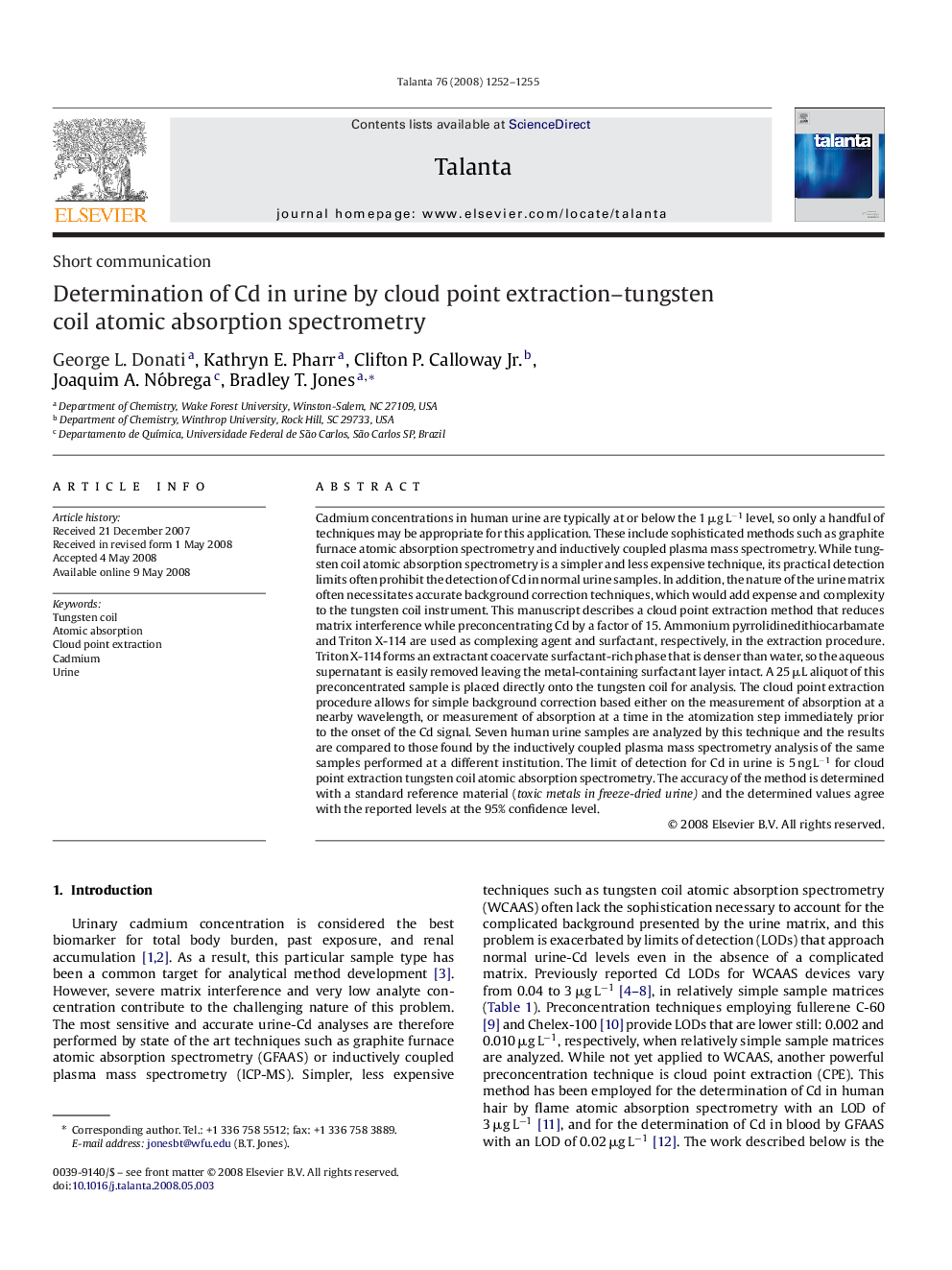| Article ID | Journal | Published Year | Pages | File Type |
|---|---|---|---|---|
| 1245468 | Talanta | 2008 | 4 Pages |
Abstract
Cadmium concentrations in human urine are typically at or below the 1 μg Lâ1 level, so only a handful of techniques may be appropriate for this application. These include sophisticated methods such as graphite furnace atomic absorption spectrometry and inductively coupled plasma mass spectrometry. While tungsten coil atomic absorption spectrometry is a simpler and less expensive technique, its practical detection limits often prohibit the detection of Cd in normal urine samples. In addition, the nature of the urine matrix often necessitates accurate background correction techniques, which would add expense and complexity to the tungsten coil instrument. This manuscript describes a cloud point extraction method that reduces matrix interference while preconcentrating Cd by a factor of 15. Ammonium pyrrolidinedithiocarbamate and Triton X-114 are used as complexing agent and surfactant, respectively, in the extraction procedure. Triton X-114 forms an extractant coacervate surfactant-rich phase that is denser than water, so the aqueous supernatant is easily removed leaving the metal-containing surfactant layer intact. A 25 μL aliquot of this preconcentrated sample is placed directly onto the tungsten coil for analysis. The cloud point extraction procedure allows for simple background correction based either on the measurement of absorption at a nearby wavelength, or measurement of absorption at a time in the atomization step immediately prior to the onset of the Cd signal. Seven human urine samples are analyzed by this technique and the results are compared to those found by the inductively coupled plasma mass spectrometry analysis of the same samples performed at a different institution. The limit of detection for Cd in urine is 5 ng Lâ1 for cloud point extraction tungsten coil atomic absorption spectrometry. The accuracy of the method is determined with a standard reference material (toxic metals in freeze-dried urine) and the determined values agree with the reported levels at the 95% confidence level.
Related Topics
Physical Sciences and Engineering
Chemistry
Analytical Chemistry
Authors
George L. Donati, Kathryn E. Pharr, Clifton P. Jr., Joaquim A. Nóbrega, Bradley T. Jones,
